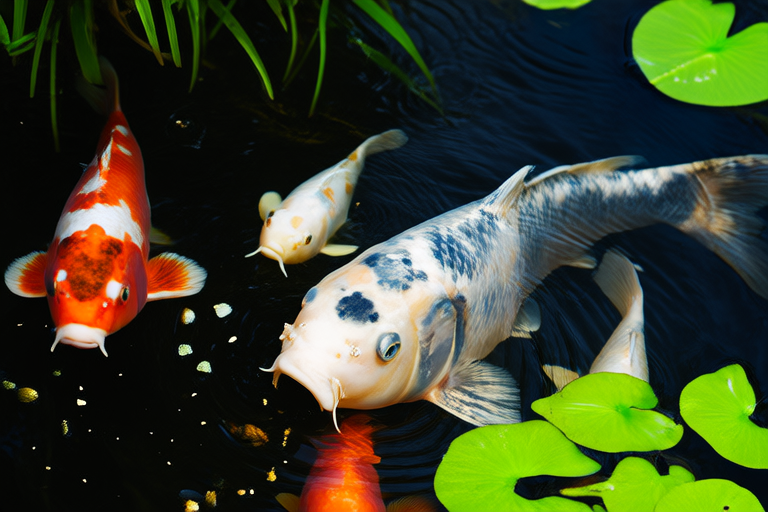Mastering Koi Feeding: Tips and Tricks for Healthy Growth
Proper nutrition is fundamental to the health and vitality of koi fish. As one of the most popular ornamental fish species, koi require a balanced diet to thrive. Their dietary needs vary depending on their age, size, and environmental conditions. This article provides comprehensive insights into mastering koi feeding, including tips and tricks to ensure healthy growth throughout their lifespan.
Understanding the Importance of Proper Nutrition
The foundation of a thriving koi pond lies in the well-being of its inhabitants. A nutritious diet not only supports growth but also enhances coloration and overall health. Malnutrition can lead to weakened immune systems, making koi more susceptible to diseases. Therefore, understanding and implementing proper feeding practices is essential for any koi keeper.
Dietary Needs at Different Life Stages
Newborn Fry
Newly hatched fry require specialized diets to support rapid growth and development. Infusoria, a mixture of microscopic organisms, serves as an excellent first food. As they grow, transitioning to finely ground commercial foods is necessary. Ensuring that the food is small enough for them to consume without difficulty is crucial during this stage.
Young Koi
Young koi benefit from high-protein diets rich in nutrients like vitamins and minerals. These nutrients aid in muscle development and overall growth. Pellets specifically designed for juvenile koi, which are smaller and softer than adult feeds, are ideal. These pellets should be fed multiple times daily, encouraging frequent eating to promote digestive health.
Adult Koi
Adult koi have more varied nutritional needs compared to younger fish. They require a balance of proteins, fats, and carbohydrates. High-quality commercial pellets formulated for adults provide essential nutrients. Adult koi can be fed less frequently but in larger quantities, ensuring they receive adequate sustenance while preventing obesity.
Recommended Feeding Schedules
Establishing a consistent feeding schedule is key to maintaining koi health. During warmer months, when water temperatures are between 68°F and 75°F (20°C to 24°C), koi can be fed up to three times daily. In cooler periods, reduce feeding to once or twice daily as their metabolism slows down. Always observe the fish to determine if they are fully consuming the food within five minutes; if not, adjust the quantity accordingly.
Signs of Overfeeding and Underfeeding
Overfeeding
Excessive feeding can lead to several issues, including poor water quality and increased waste production. Signs of overfeeding include floating uneaten food and cloudy water. Regular water changes and reducing the amount of food can help mitigate these problems.
Underfeeding
Insufficient feeding can result in malnutrition, stunted growth, and weakened immune systems. Signs of underfeeding include lethargy, loss of appetite, and reduced activity levels. Monitoring koi behavior and adjusting feeding amounts can prevent underfeeding.
Varying Diets and Seasonal Changes
Introducing variety in koi diets can enhance their health and coloration. Incorporating live foods such as brine shrimp and blackworms provides essential nutrients not found in standard pellets. Seasonal changes affect koi feeding requirements. In colder months, reduce protein intake and increase carbohydrate consumption to support energy reserves. Conversely, higher protein diets are beneficial during spring and summer for growth and color enhancement.
Selecting Quality Feed and Storage Methods
Choosing high-quality feed ensures that koi receive optimal nutrition. Look for feeds with visible ingredients like fish meal, soybean meal, and vegetable oils. Avoid feeds containing fillers or artificial colors. Proper storage of feed is crucial to maintain freshness. Store feed in a cool, dry place away from direct sunlight to prevent spoilage.
Hand-Feeding Techniques
Hand-feeding koi not only provides them with additional nutrients but also encourages interaction and bonding. To begin, select a high-protein treat such as freeze-dried krill or bloodworms. Gently introduce your hand into the water and allow the koi to become accustomed to your presence. Gradually offer treats, ensuring that the fish are comfortable and not stressed. Hand-feeding should be done sparingly to avoid overfeeding.
Monitoring Health Through Feeding Habits
Closely observing koi feeding habits can provide valuable insights into their health. Healthy koi will eagerly consume food within a few minutes. Lethargic or disinterested fish may indicate underlying health issues. Regular monitoring allows for early detection of problems and timely intervention. Adjust feeding routines based on environmental factors such as water temperature and quality to maintain optimal health.
Conclusion
Mastery of koi feeding involves understanding their nutritional needs at various life stages, adhering to recommended feeding schedules, and adapting to seasonal changes. By selecting quality feed, storing it properly, and incorporating hand-feeding techniques, koi keepers can foster healthy, vibrant fish. Continuous observation and adaptation of feeding routines based on environmental factors further ensure the well-being of these magnificent creatures. With dedication and care, every koi keeper can achieve success in nurturing their aquatic companions.
